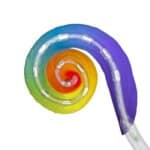What Happens During a Cochlear Implant First Fitting?

There is no cochlear implant without a first fitting. After having their CI implanted, every user needs audiological adjustments in order to best adapt the implant system to individual requirements and hearing needs. In this interview, experienced audiologist Prof. Dr. Tobias Rader explains what happens during a cochlear implant fitting, why each CI has to be adjusted individually, and what role the length of the implant electrode array plays.

What Is a CI Fitting and What Is Its Purpose?
During a fitting, (sometimes known as an “activation”) the transmission of sound hitting the audio processor’s microphone is individually matched to the auditory nerve. To achieve this, the cochlear implant electrodes, which act as a bridge between the CI and the cochlea, are individually stimulated. The audiologist determines the individual hearing threshold and comfortable volume for each electrode. All electrodes (all pitches) should, where possible, be perceived as equally loud. The sound should be pleasant and the understanding of speech should be the best possible for each individual.
What Happens at a Fitting?
After a general check of the implant’s functionality, the individually stimulated electrodes are first adjusted to a comfortable volume. In order to achieve uniform loudness and harmonic auditory perception, sometimes several or all of the electrodes are compared with each other. Next, the electrical hearing thresholds of all electrodes are checked and adjusted. The overall sound of speech and noise can still be adjusted to individual needs later on in live mode via microphone.
Settings can be further optimized with the help of pitch perception in users with appropriate musical awareness. During this pitch-based fitting, the frequencies of the individual electrodes are shifted in such a way that the most correct mapping of, for example, scales and pitch intervals is achieved. For recipients who have normal hearing or hearing aids in their non-implanted ear we do this by comparing acoustic and “electric” hearing. In bilateral recipients, the “newer” CI can also be adapted to the “older” CI if the recipient is musical.
Sometimes, a CT-scan is carried out after implantation to show the position of the electrodes in the cochlea. We can use this individual information to perform an anatomy-based fitting.
What Exactly Does Anatomy-Based Fitting Mean?
Each location along the turns of the cochlea is responsible for processing a specific frequency. By stimulating the CI electrodes from the tip of the cochlea all the way to the start, the recipient can hear a series of ascending tones. Unfortunately, without individualized, anatomy-based fitting, we can’t know the recipient’s perceived pitch. Every cochlea is different in size and shape. Knowing the exact pitch of each electrically-stimulated tone and the location in the cochlea where it is stimulated allows for more precise pitch mapping. This can result in improved music and speech perception.
What Does Anatomy-Based Fitting Have to Do With Electrode Length?
A cochlear implant can only stimulate those parts of the cochlea that can be reached with its electrode array. Just like in a normal-hearing ear, lower pitches should be sent to the audiotory nerve at the right location in the cochlea. This means that areas deeper in the cochlea must also be stimulated. Depending on the geometry, type of electrode, and residual hearing, a deeper insertion with a longer electrode may be appropriate.
When and How Often Should Fittings Happen ?
The recipient first needs to achieve a stable point where they have good understanding of speech in quiet. Later on, the pitch assignment is checked and optimized. It is important for users to try their settings in familiar surroundings at home, for example at the piano, and see whether tone sequences and intervals sound “familiar” and “correct”. If needed, the next fitting appointment will attempt to further improve pitch perception.
Thank you for the interview, Prof. Rader!
Thanks for your message. We will reply as soon as possible.
Send us a message
Field is required
John Doe
Field is required
name@mail.com
Field is required
What do you think?
The content on this website is for general informational purposes only and should not be taken as medical advice. Please contact your doctor or hearing specialist to learn what type of hearing solution is suitable for your specific needs. Not all products, features, or indications shown are approved in all countries.
Jeff Spaulding
April 03, 2023
This was very interesting. I was "activated" on February 28. I was/am a piano player, with a Master of Music degree. I've been working every day to "hear" the correct pitches on my piano with the implant. I believe I am making progress. Any suggestions from you would be greatly appreciated!
MED-EL
April 07, 2023
Hi Jeff, thanks for your comment and congratulations on your activation! Here you can find user stories similar to yours that can help you get back to music with your CI: https://blog.medel.com/userstories/how-my-eas-system-helps-me-hear-music-better-lauras-story/ https://blog.medel.com/userstories/teaching-and-playing-music-with-cochlear-implants-lauras-story/ Please also find more tips and tricks on listening to music with your cochlear implant here: https://blog.medel.com/tips-tricks/tips-tricks-for-adults/listening-to-music-with-a-cochlear-implant/ https://blog.medel.com/tips-tricks/tips-tricks-for-adults/10-tips-for-music-appreciation-with-a-cochlear-implant/ https://blog.medel.com/tips-tricks/tips-tricks-for-adults/playing-and-listening-to-music-with-a-cochlear-implant/ You can also get in touch with other CI users that sing or play an instrument on our Hearpeers forum: https://forum.hearpeers.com/ Please let us know if you have any further questions. Kind regards, Gordana



Conversation
1 Comment